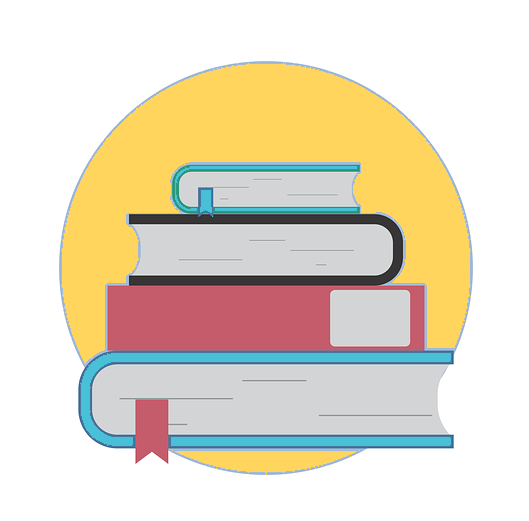116
In the Creative Commons module, we explored how open licenses often give permission for making derivative or revised versions of the original. This is important for OER as it is rare to find resources that are perfect for your learning context. How familiar is the following scenario?

Scenario – Assigning a Textbook
Dr. Ferreira is assigning his 3 credit Biology 101 course a textbook. Upon review of the textbook, they notice that the students will only need half of the text to cover the course, some of the learning activities need updating to incorporate recent findings in the field, and the content needs restructuring to flow better with the course content. This book will cost students $150.
With “closed,” or material under copyright restrictions, Dr. Ferreira would not be able to make these changes to make a cohesive learning experience for his students. Resources with adaption licenses allow a work to be revised, modified, altered, or customized in any way that is suitable for the situation. Adapting OER offers the following benefits:
- Save time when preparing lessons as resources don’t have to be made from scratch.
- Benefit from the experiences of teachers who have taught your subject area before, and also improve their resources for your learners.
- Cheaper than buying expensive texts or subject resources that don’t allow adaptations to suit your needs.
- It is legal to adapt and repurpose. No-one will be sued for copyright infringement.
Why adapt open content? by OER Africa licensed under CC By-SA
What is an Adaption?
The following video shows a common adaption example when engaging in OER.
OER adaptions are any modifications made to the already existing openly licensed content for your own purposes. Adaptions to OER can be made in any number of ways and are only limited by your specific needs.
As the video showed, simply taking an openly licensed image and modifying the size and adding descriptive text is an adaption. Similarly, taking a set of openly licensed test questions, removing a few options and adding them to your resource is considered an adaption. Adaptions can be simple modifications made to an object to make it useful for your content.
Examples of OER Adaption
Some adaptions can be simple and low time commitment, while others may be more involved and require greater restructuring and additions to the content. The following are some examples of more complex adaptions of OER.
Diversity, Accessibility & Inclusive Design
The focus of many open education projects is to provide access to education. But what does access mean if the materials are not accessible for each and every student? Do they fulfill the mandate to deliver fully open education? Adaptions to existing OER to improve a resource to make it usable by people with the widest possible range of abilities, operating within the widest possible range of situations (environments, conditions, and circumstances) is an excellent example of equitable OER adaption.
Adapting a text to better represent a diverse population is one way in which open educational resources can improve equity and inclusion. Learners can relate more to the content if they see themselves represented in the materials from which they learn, which can be addressed through things such as: including images of people with diverse identities and abilities, changing names of characters in fictional scenarios or case studies to better reflect people from many parts of the world, revising examples to include situations, issues, and questions that are relevant to many different people.
Example: Dr. Benjamin Cheung is adapting Principles of Social Psychology to replace images with ones that show more diversity to better reflect identities within his classrooms.
Translation
Imagine the world of OER possibilities if the content shared across the globe was translated. Translation of texts in a variety of languages increases the breadth of OER content available for use while supporting the diversity of scholarly voices and increasing access to resources from all parts of the world.
Example: Examples of OER in languages other than English, including adapted translations can be found at the OER In Other Languages portal.
Updating
The ability to update content is one of the most beneficial parts of engaging in OER adaption. Due to the open nature of OER, there is greater potential for sustainability of content over time as the overhead to update (e.g. technical requirements, etc.) is not as cumbersome as more traditional forms of publishing. This allows for updating the resource with the latest research discoveries or theories that can support subject areas that are changing quickly (e.g., political science, media studies, cultural studies, etc.)
Example: Teaching in a Digital Age – Second Edition has not only been updated to add and expand more content, but A.W. (Tony) Bates has also made additions which examines three emerging technologies (artificial intelligence, virtual/augmented reality, and serious/educational games).
Learning Design
A great benefit of OER is the ability to adapt content to the specific requirements of the course, student needs, and teaching and learning preferences.
Example: Fundamentals of Business: Canadian Edition was modified to add content from the Canadian context, adding quizzes at the end of every chapter, and updating the learning objectives to meet the needs of the course.
Practical Adaption Considerations
It will come as no surprise that the biggest consideration when adapting a resource is the license assigned. For OER, Creative Commons is the standard license used to assign usage rights. For more in-depth detail about Creative Commons, review the Creative Commons module. However, finding the license information and understanding the terms of use can sometimes cause some concern with using the content.
Finding the License
Many OER will have a license attached to them directly, either at the beginning or end of the resource or, in the case of an online object, on the landing page of the resource. For example, the resource Naming the Unnamable: An Approach to Poetry for New Generations has a license section in the metadata or information about the book. However, sometimes the license information is not as simple to find. You may need to search with sections of a website called terms of use, copyright, permissions, or licenses as the entire site may have a single license for all resources.
License Terms of Use
While licenses will tell you how a resource can be used, open licenses, like Creative Commons, will also outline requirements related to citing, identification of modifications, assigning licenses, and sharing back with the community. This will impact your adaption as you may need to include aspects of your work that you may not have considered.
Review the following two Creative Commons licenses.
 Attribution 4.0 International (CC BY 4.0) Attribution 4.0 International (CC BY 4.0)Under the following terms: Attribution — You must give appropriate credit, provide a link to the license, and indicate if changes were made. You may do so in any reasonable manner, but not in any way that suggests the licensor endorses you or your use. No additional restrictions — You may not apply legal terms or technological measures that legally restrict others from doing anything the license permits. |
 Attribution-ShareAlike 4.0 International (CC BY-SA 4.0) Attribution-ShareAlike 4.0 International (CC BY-SA 4.0)Under the following terms: Attribution — You must give appropriate credit, provide a link to the license, and indicate if changes were made. You may do so in any reasonable manner, but not in any way that suggests the licensor endorses you or your use. ShareAlike — If you remix, transform, or build upon the material, you must distribute your contributions under the same license as the original. No additional restrictions — You may not apply legal terms or technological measures that legally restrict others from doing anything the license permits. |
The two Creative Commons licenses [CC BY and CC BY-SA] outline terms of use of the object, and while both require attributing the original work and identification of modifications, the Attribution-ShareAlike 4.0 International (CC BY-SA 4.0) requires those that adapt and share the original work to use the same license as original.

Test Your Knowledge – Adapting and OER
https://pressbooks.bccampus.ca/pose/wp-admin/admin-ajax.php?action=h5p_embed&id=34File Formats
Adapting content sometimes can be a complicated process as the file formats that are shared may not be easily editable. When sharing OER, original source files used to create the content and the availability of these source files can vary widely, even from the same hosting service.
For example, LibreTexts sometimes offer a downloadable PDF, but no editable files. This means that you will need to manually copy and paste the contents of the text that you want to use, and spend time cleaning up the formatting. This will greatly impact the amount of time spent on adapting the content. This can be even more complicated when adapting media files.
Later in this module you will learn about Creating OER. File formats will be mentioned again as a part of your creation workflow. Sharing content is only one part of the workflow. Sharing your resource in a format that is available for editing provides the greatest advantage to the community.

Dig Deeper
If you want to learn more about using third party materials in your OER, you can watch the webinar on Navigating Fair Dealing and Open Resources – Third Party Materials in OER by eCampusOntario.
Adapted from Adapt an OER by Queen's University Library, licensed under CC-BY-SA. Adapted from the Open Textbook Adaptation Toolkit from UBC Library, published under a Creative Commons Attribution-ShareAlike 4.0 International License.
